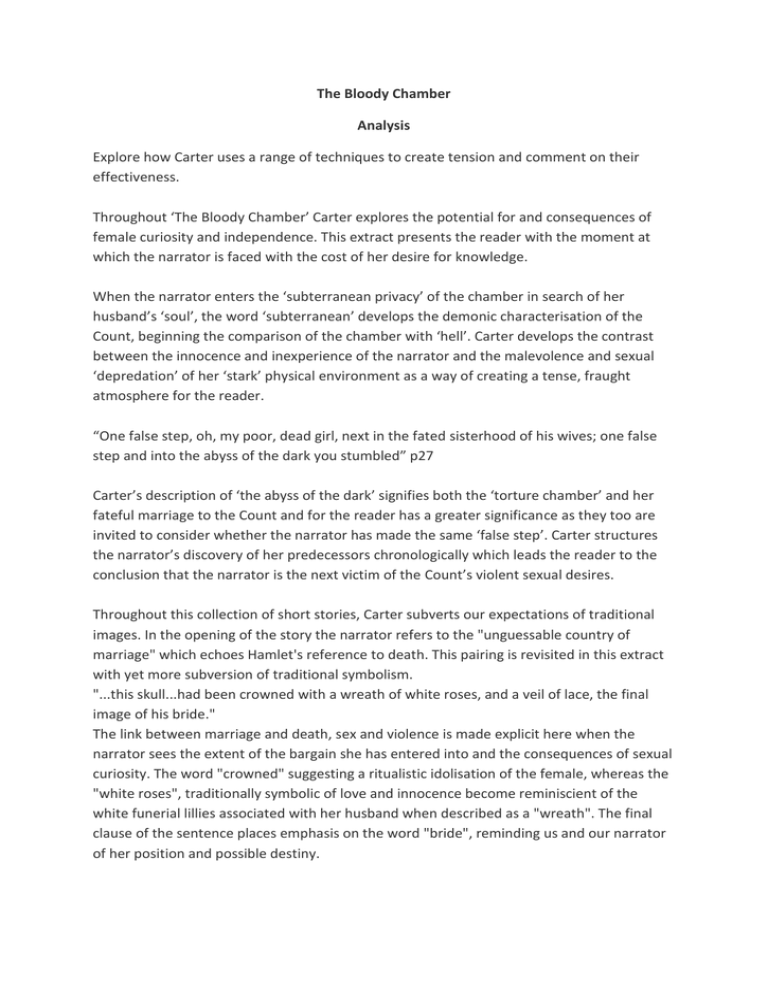
The Bloody Chamber
Analysis
Explore how Carter uses a range of techniques to create tension and comment on their
effectiveness.
Throughout ‘The Bloody Chamber’ Carter explores the potential for and consequences of
female curiosity and independence. This extract presents the reader with the moment at
which the narrator is faced with the cost of her desire for knowledge.
When the narrator enters the ‘subterranean privacy’ of the chamber in search of her
husband’s ‘soul’, the word ‘subterranean’ develops the demonic characterisation of the
Count, beginning the comparison of the chamber with ‘hell’. Carter develops the contrast
between the innocence and inexperience of the narrator and the malevolence and sexual
‘depredation’ of her ‘stark’ physical environment as a way of creating a tense, fraught
atmosphere for the reader.
“One false step, oh, my poor, dead girl, next in the fated sisterhood of his wives; one false
step and into the abyss of the dark you stumbled” p27
Carter’s description of ‘the abyss of the dark’ signifies both the ‘torture chamber’ and her
fateful marriage to the Count and for the reader has a greater significance as they too are
invited to consider whether the narrator has made the same ‘false step’. Carter structures
the narrator’s discovery of her predecessors chronologically which leads the reader to the
conclusion that the narrator is the next victim of the Count’s violent sexual desires.
Throughout this collection of short stories, Carter subverts our expectations of traditional
images. In the opening of the story the narrator refers to the "unguessable country of
marriage" which echoes Hamlet's reference to death. This pairing is revisited in this extract
with yet more subversion of traditional symbolism.
"...this skull...had been crowned with a wreath of white roses, and a veil of lace, the final
image of his bride."
The link between marriage and death, sex and violence is made explicit here when the
narrator sees the extent of the bargain she has entered into and the consequences of sexual
curiosity. The word "crowned" suggesting a ritualistic idolisation of the female, whereas the
"white roses", traditionally symbolic of love and innocence become reminiscient of the
white funerial lillies associated with her husband when described as a "wreath". The final
clause of the sentence places emphasis on the word "bride", reminding us and our narrator
of her position and possible destiny.






